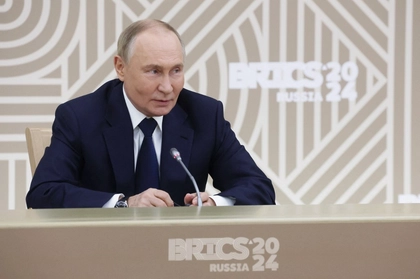A Boeing 737 plane of Russia’s S7 (Siberia Airlines), flying from Moscow to the Siberian city of Tomsk with 165 passengers onboard on Friday, had to land on one engine in Novosibirsk on Friday after the crew shut down the other engine to avoid a “flame-out.”
A statement from the West Siberian transport prosecutor’s office said: “According to preliminary information, the crew of Siberia Airlines Boeing 737 performing a flight from Moscow to Tomsk earlier today made the decision to land at Novosibirsk International Airport due to a malfunction in one of its propulsion systems.”
JOIN US ON TELEGRAM
Follow our coverage of the war on the @Kyivpost_official.
Whether there was any connection between the malfunction of the propulsion systems and the Russian airline industry’s general deficit of spare parts was unclear.
The S7 airline claims on its website to be Russia’s largest private airline in Russia, with the most modern fleet in the Russian air transit market. It lists a total of 101 aircraft in its fleet: 61 Airbus A320 variants, 23 Boeing 737, and 17 Brazilian Embraer aircraft.
The Novaya Gazeta Europa (NGE) website reports that even before the full-scale invasion of Ukraine and the imposition of Western sanctions, Russia’s aviation industry faced serious, well-documented safety issues.
NGE said that following an audit of Russia’s flight safety by the International Civil Aviation Organization (ICAO) last September, Russia was given “red flag” status, making it one of the world’s five most dangerous countries in which to fly.

Imprisoned Militant Russian Nationalist Blasts Kremlin’s Policies
NGE’s own investigation found more than 120 aviation-related incidents accidents involving Russian airlines in the first eight months of this year, a figure more than double the number reported in 2018 in spite of the fact, that since the war in Ukraine, there an almost 35 percent reduction in Russian air traffic volume.
In August, the website Aviation Source News reported that Aeroflot, the Russian state airline, had issued a notice recommending that the airline should deactivate the brakes of five Boeing 777s, two Airbus A321s, one A330, and one A320 should be deactivated, due to a lack of parts, with pilots briefed to land using reverse thrust only.
The notice went on to advise that “aircraft may tend to turn to the side where the brakes are not deactivated. Pay attention to this fact, especially when landing on a wet runway with a crosswind!!!”
It also said that “if the width of the runway is restricted [there is] a risk of overrunning the runway!!!”
Screenshot of the Aeroflot notice
In addition to the forced landing of a Ural Airlines Airbus 320 in a farmer’s field with more than 150 passengers aboard after a hydraulics failure, there have been other serious incidents this year.
A video posted on X (formerly Twitter) by Jason Corcoran, a journalist, in March 2023, shows the intense scenes on a Rossiya airlines flight from Sochi to Krasnoyarsk when passengers had to pull on oxygen masks during an emergency landing. Corcoran commented that “Western jets seized by the Kremlin are deteriorating due to lack of servicing & parts.”
Disturbing footage from a #Boeing-737 that made an emergency landing in Krasnoyarsk in Russia after cabin depressurization.
— Jason Corcoran (@jason_corcoran) February 24, 2023
● The cabin pressure control system on the flight from Sochi failed. Western jets seized by the Kremlin are deteriorating due to lack of servicing & parts pic.twitter.com/uhKeFXHhHu
Two incidents, reported by Radio Free Europe, show it is not only Western built aircraft that are suffering from lack of spare parts because of sanctions.
On June 13 a Russian Sukhoi Superjet-100 (SS-100) plane flying from Moscow to Kazakhstan’s Caspian port city of Aqtau made an emergency landing in the Russian city of Samara due to problems in one of its engines and two days later another SS-100 with 54 passengers aboard made an emergency landing in the Siberian city of Irkutsk after the air-conditioning system malfunctioned.
This all provides the backdrop to the pledges, made by Russian President Vladimir Putin at September’s Eastern Economic Forum in Vladivostok.
He said he wants to build new and modernize existing airports, improve standards for small aircraft and increase the supply of domestic aircraft and helicopters, with the aim of increasing “the accessibility of air travel” for all Russians.
Putin told the forum on Sept. 12: “I think it would be right to set the bar so that by 2030, passenger traffic on domestic flights in the far east will increase to at least four million people a year.”
You can also highlight the text and press Ctrl + Enter







